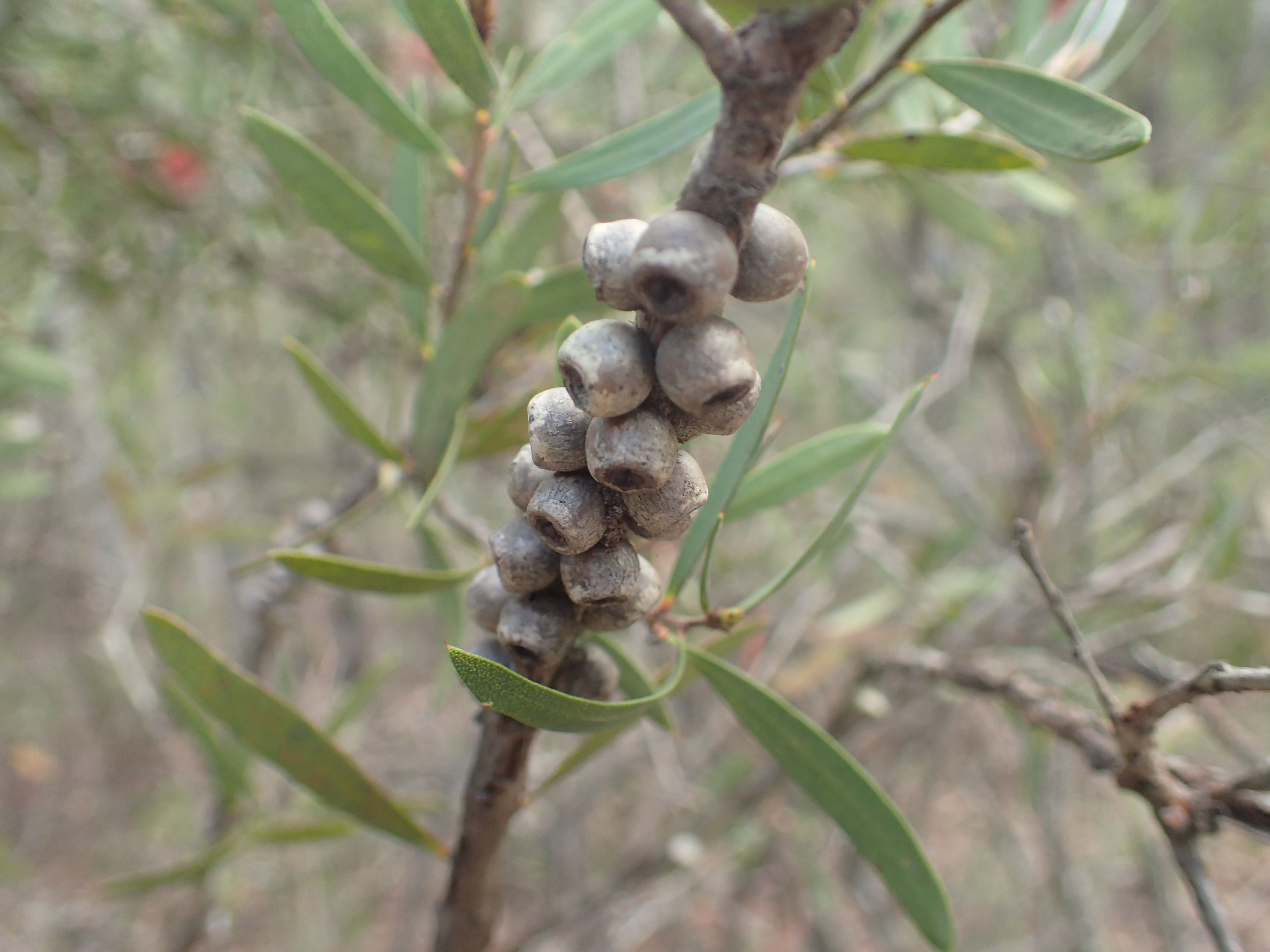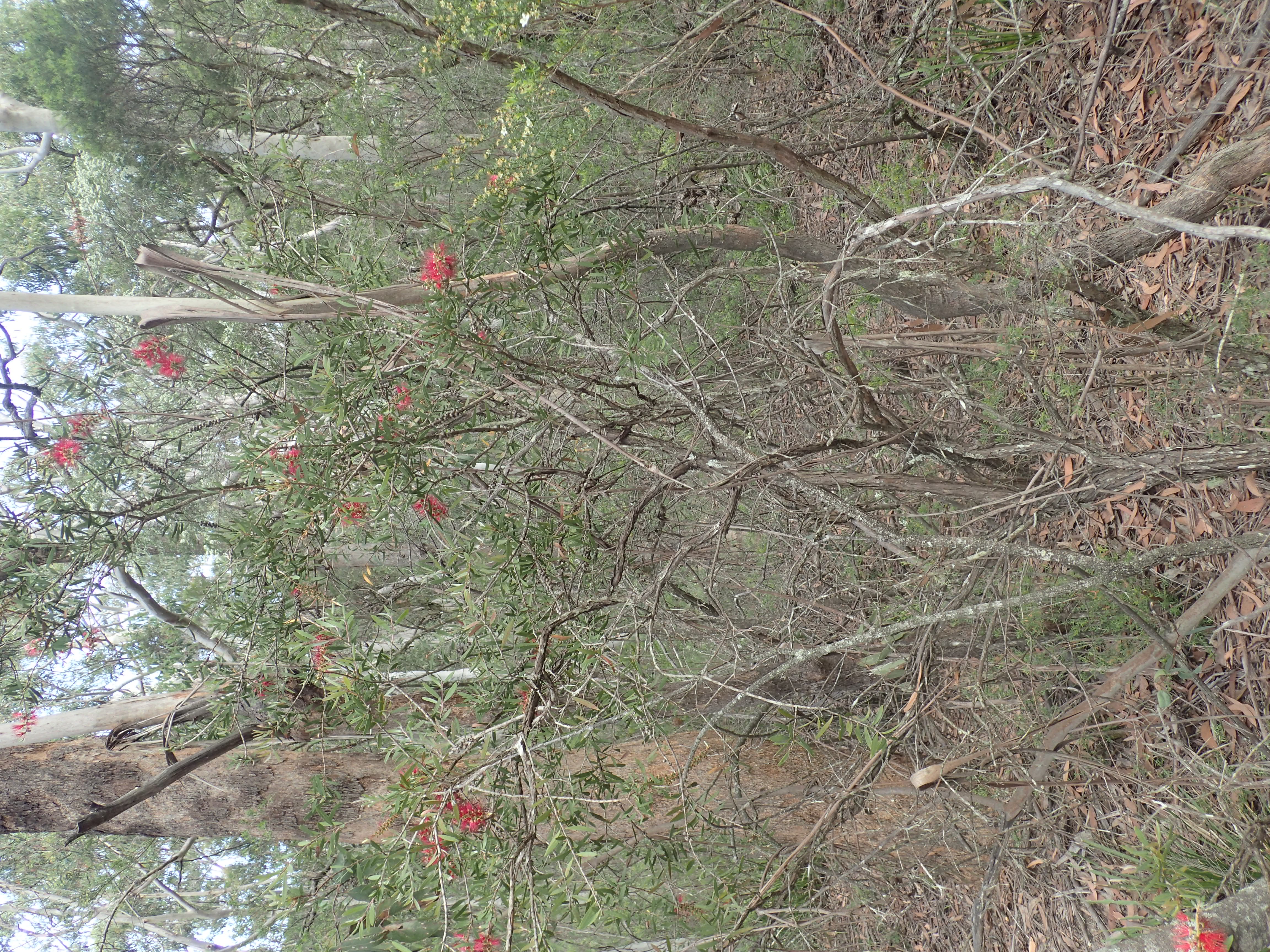Callistemon Megalongensis on:
[Wikipedia]
[Google]
[Amazon]
''Melaleuca megalongensis'', commonly known as Megalong Valley bottlebrush, is a plant in the myrtle 

family
Family (from ) is a Social group, group of people related either by consanguinity (by recognized birth) or Affinity (law), affinity (by marriage or other relationship). It forms the basis for social order. Ideally, families offer predictabili ...
, Myrtaceae
Myrtaceae (), the myrtle family, is a family of dicotyledonous plants placed within the order Myrtales. Myrtle, pōhutukawa, bay rum tree, clove, guava, acca (feijoa), allspice, and eucalyptus are some notable members of this group. All ...
and is endemic
Endemism is the state of a species being found only in a single defined geographic location, such as an island, state, nation, country or other defined zone; organisms that are indigenous to a place are not endemic to it if they are also foun ...
to New South Wales. (Some Australian state herbaria
A herbarium (plural: herbaria) is a collection of preserved plant specimens and associated data used for scientific study.
The specimens may be whole plants or plant parts; these will usually be in dried form mounted on a sheet of paper (called ...
use the name ''Callistemon megalongensis''). It is a shrub similar to ''Melaleuca citrina
''Melaleuca citrina'', the common red bottlebrush, crimson bottlebrush, or lemon bottlebrush, is a plant in the myrtle family Myrtaceae, and is endemic to eastern Australia. Some Australian state herbaria continue to use the name ''Callistemon c ...
'' (''Callistemon citrinus
''Melaleuca citrina'', the common red bottlebrush, crimson bottlebrush, or lemon bottlebrush, is a plant in the myrtle family Myrtaceae, and is endemic to eastern Australia. Some Australian state herbaria continue to use the name ''Callistemon c ...
'') which occurs in the same area and is difficult to distinguish from it, except when in flower.

Description
''Melaleuca megalongensis'' is a shrub growing to tall with soft, flaking or peeling bark. Its leaves are arranged alternately and are long, wide, flat, narrow elliptic to narrow egg-shaped with the narrow end towards the base. There is a mid-vein and 15 to 24 lateral veins. The leaves usually have some thickening at the mid-vein and margins. The flowers are arranged in spikes on the ends of branches which continue to grow after flowering and are in diameter with 25 to 60 individual flowers. The petals are long and fall off as the flower ages and there are 45-50 stamens in each flower. The filaments of thestamens
The stamen (: stamina or stamens) is a part consisting of the male reproductive organs of a flower. Collectively, the stamens form the androecium., p. 10
Morphology and terminology
A stamen typically consists of a stalk called the filamen ...
are pink with a dark red anther. Flowering occurs in November and December and is followed by fruit which are woody capsules, long.
Taxonomy and naming
''Melaleuca megalongensis'' was first formally described in 2009 byLyndley Craven
Lyndley Alan Craven (3 September 1945 – 11 July 2014) was a botanist who became the Principal Research Scientist of the Australian National Herbarium.
Lyndley ("Lyn") Craven worked for the Commonwealth Scientific and Industrial Research Organ ...
in Novon
The Missouri Botanical Garden is a botanical garden located at 4344 Shaw Boulevard in St. Louis, Missouri. It is also known informally as Shaw's Garden for founder and philanthropist Henry Shaw. Its herbarium, with more than 6.6 million s ...
. The specific epithet
In Taxonomy (biology), taxonomy, binomial nomenclature ("two-term naming system"), also called binary nomenclature, is a formal system of naming species of living things by giving each a name composed of two parts, both of which use Latin gramm ...
(''megalongensis'') refers to the locality where the species is found.
''Callistemon megalongensis'' is regarded as a synonym of ''Melaleuca megalongensis'' by the Royal Botanic Gardens, Kew
Royal Botanic Gardens, Kew is a non-departmental public body in the United Kingdom sponsored by the Department for Environment, Food and Rural Affairs. An internationally important botanical research and education institution, it employs 1,10 ...
,
Distribution and habitat
This melaleuca occurs in theMegalong Valley
Megalong Valley is part of the Blue Mountains (Australia), Blue Mountains of New South Wales, Australia. It is located west of Katoomba, New South Wales, Katoomba. On its eastern side, the valley is separated from the Jamison Valley by Narrow N ...
in the Blue Mountains. It grows in damp situations near streams.
Conservation
''Melaleuca megalongensis'' has been classified as "critically endangered" (as ''Callistemon megalongensis'') under the Australian Government ''Environment Protection and Biodiversity Conservation Act 1999
The ''Environment Protection and Biodiversity Conservation Act 1999'' (Cth) is an Act of the Parliament of Australia that provides a framework for protection of the Australian environment, including its biodiversity and its natural and cult ...
'' and by the Scientific Committee of the NSW Government Department of Environment and Heritage.
References
{{Taxonbar, from=Q17596320 megalongensis Flora of New South Wales Plants described in 2009 Taxa named by Lyndley Craven